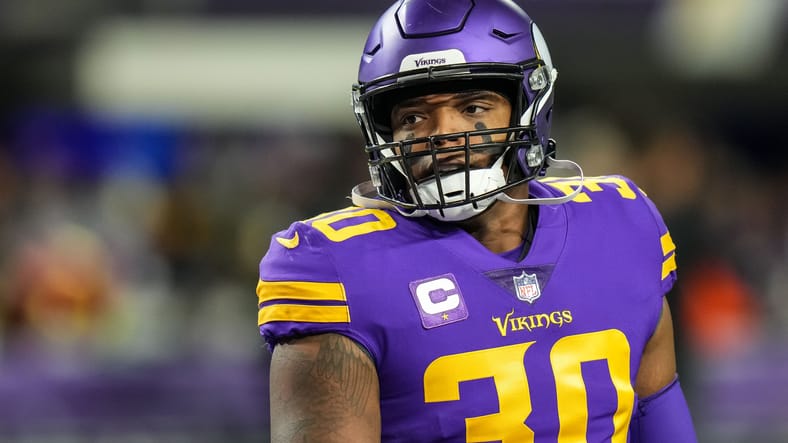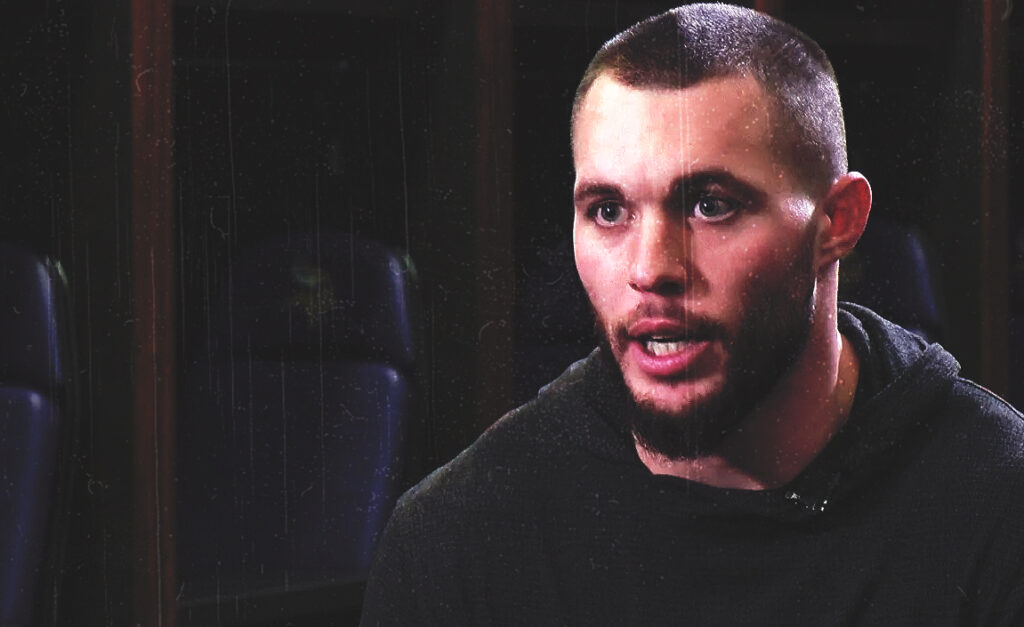Effective Screens, Quick RB Routes Can Help Reignite Vikings Offense

Last season’s offense wasn’t good enough. By no means were things all bad, and yet it was a unit that could have been far more dominant. Recently, we’ve heard rumblings about how the new Vikings offense will be more dynamic and unpredictable.
Finding ways to get Justin Jefferson, Adam Thielen, and Irv Smith Jr. open is undoubtedly a smart strategy. All three have the capacity to be among the NFL’s best at their position in 2022. As a result, one would expect that Minnesota could then, in turn, get more receiving production from their deep group of running backs. If those three are threatening defenses down the field, Minnesota’s RBs ought to find a lot of room underneath.
Take rookie Ty Chandler, for instance. He turned 14 catches into 211 yards last season in college, good for a 15 yards per reception average. That’s an elite number for a RB, one that would be impressive if it was coming from a receiver. It’s plausible the rookie finds his way onto the field if he can show that he can pick up blitzers. Don’t forget that he ran a 4.38 forty.
Last season, Dalvin Cook averaged a career-low 6.6 yards per catch. Previously, he had never gone below 7.6, so 2021 was indeed modest by his normal standards. Meanwhile, Alexander Mattison averaged 7.1 yards per reception and C.J. Ham 7.4 yards per reception (both of which were career lows). Seeing all three put forth career lows – and seeing the FB with the most impressive average – helps underscore the issue.
Quite evidently, the Vikings offense didn’t do a good enough job of generating explosive passes with their running backs.
Kirk Cousins gets a fair bit of criticism for not being aggressive enough. At times, that means people think he checks the ball down too often, but recent research suggests that’s not the case. He’s neither among the QBs who use checkdowns the most nor the least. The point I’m trying to make is that the Vikings offense could very reasonably accommodate more passes to their RBs. The key, of course, is doing so in an effective manner.
There were moments last season when we all knew when a screen was going to be called. 2nd & 10 and deep in Minnesota’s own territory? Good chance the mandate would be for a relatively safe screen in an attempt to pick up good yardage. The issue is that screens work largely through deception. A defense needs to aggressively work up field so the QB can then hit his RB in a lot of green grass. In other words, more unpredictable playcalling will indeed be helpful.
Moving forward, Kevin O’Connell and Wes Phillips will be looking for ways to squeeze the most production possible out of a talented, deep RB group. Finding ways to integrate them into the passing game more effectively is one way of doing so. Screens, flare routes, and quick slants from the slot can all be used more effectively. Doing so would add another layer to Minnesota’s passing attack, further stressing the opposition’s defense.

Vikings Territory Also Read: ‘Hitman’ Hit in the Unmentionables as London Game Ended
[brid autoplay=”true” video=”1025515″ player=”26279″ title=”WATCH%20San%20Francisco%2049ers'%20Rookie%20QB%20Brock%20Purdy%20″ duration=”211″ description=”Crissy Froyd and Carolyn Manno discuss the 49ers’ rookie QB Brock Purdy.Brock Purdy is the latest “Mr. Irrelevant” despite playing the most relevant position in football.The Iowa State quarterback earned that tag by being the 262nd and final selection of this year’s seven-round NFL draft by the San Francisco 49ers on Saturday in Las Vegas.” uploaddate=”2022-06-03″ thumbnailurl=”undefined” contentUrl=”https://cdn.brid.tv/live/partners/17660/streaming/1025433/1025433.m3u8″ width=”16″ height=”9″]

You must be logged in to post a comment.